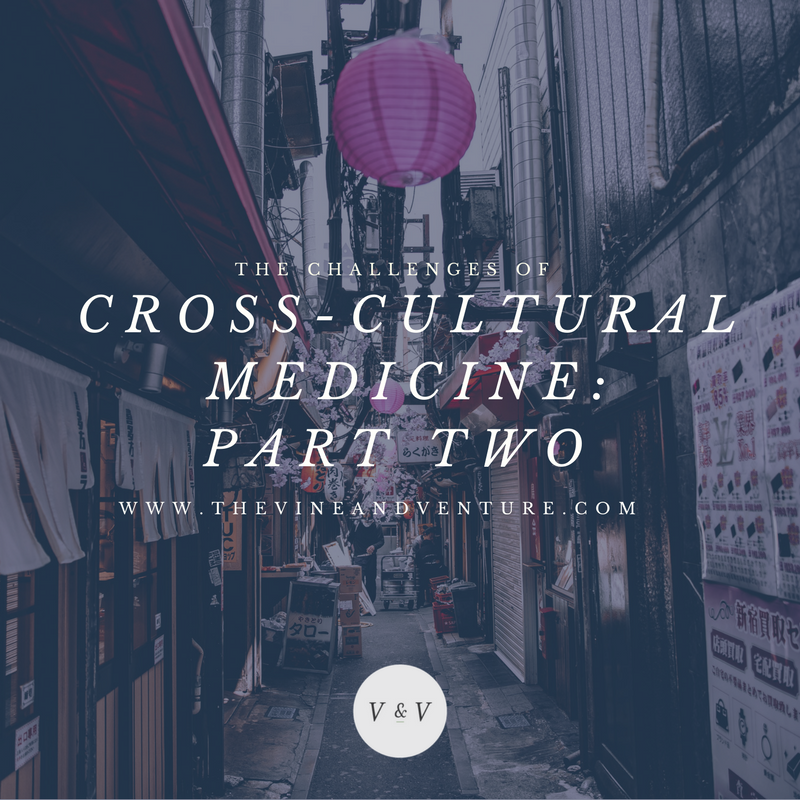
In addition to language barriers discussed in Part One of this post, refugees typically have low health literacy. The combination of low health literacy and English not being their first language can make for an incredibly hard scenario to navigate in the patient encounter. We use visual aids frequently, and repetition when we are talking about the treatment plan through our translators.
Just because our patients have low health literacy doesn’t mean they are not smart! Most of our patients speak three or more different language— English isn’t their second language, it may be their fourth or fifth! However, they have been deprived of education more often than not, and our healthcare language is difficult to understand even for native English speakers.
Our patients from many different cultural backgrounds have many different cultural understandings of disease. These are things I could spend a lifetime learning, but never come to a complete understanding of. They have different understandings of health concepts, terminology, and healthcare systems. They have different understandings of the human body.
If even American born patients do not present like “the textbook case”, then recently immigrated refugees veer even further off what is the textbook case you learned in school. That is because those cases and textbooks and teachers most likely were written from an American cultural perspective.
Believe it or not, patients from different parts of the world have different ways of describing symptoms and stories for explaining what is causing it. This matters immensely in regards to the history (getting the story straight) and the treatment plan (communicating what to do about the problem).
For instance, our Somali medical assistant informed me that nutrition counseling or preventative care for some Somali diabetics may not succeed because many of them believe that God has determined the day they will die already so what does it matter if they eat healthily or not? (some Americans may think this same thing, I’m not excluding this to Somali Muslims only). This context is important to know before we counsel on preventative care.
Patients from agrarian backgrounds may describe their symptoms in this context, such as “I fell like a tree to the ground” or “I feel like plants are growing inside of me”
Ignorance of health and social conditions on the providers part can be a challenge. Before I worked at Ardas, I was ignorant about FGM (female genital mutilation) and I was unaware of the prevalence of trauma and torture in refugee patients and what this can present like physically. I had to figure it out as I went. Luckily there is a more experienced physician assistant in the clinic who educated me on FGM.
Over half of our patients have likely experience trauma or torture. These things matter immensely because we need to know about trauma in order to properly care for our patients holistically. Think—proper mental health care for those experiencing PTSD (post-traumatic stress disorder), depression, anxiety, somatization (physical symptoms resulting from a mental state), and frequent UTIs (urinary tract infections) or pain with intercourse due to FGM. So one of the challenges is getting over my own ignorance, taking off my rose-colored glasses, and asking our patients about FGM, trauma, or torture at every new patient encounter so we can at least try to get them the proper care.
The last challenge I will mention is time. It just takes more time to see refugees. They have increased time requirement, due to language and cultural barriers as we have discussed above (often not straightforward visits, and we have to be a cultural detective) and they have increased recurrence of appointments. We have found that being 100% walk-in is a great solution to the time challenge. They prefer getting there whenever is most convenient for them due to their use of public transit, large families, and high stress about not missing work.
We are open 8-7 Monday through Friday and 9-3 on Saturday. This allows us to see patients on a first come first serve basis and take the time that is needed for each patient.
There can be challenges for the providers for this model of clinic though, of course. The patient flow is infuriatingly unpredictable. And that is something we have to constantly get used to and exhibit flexibility depending on the patient flow.
For example, we used to have some days that were busier than others (Mondays, Tuesdays, Saturdays) so we had 3 providers there on Mondays and Tuesdays. But the last few weeks, Mondays and Tuesdays have been slower, and other days have been busier (when we only have two providers) So it makes it pretty frustrating when you have 3 providers twidling their thumbs some afternoons on some days only 2 providers wanting to pull their hair out because they need more help on Fridays and Saturdays.
The same issue occurs with the “busy times” of the day. We usually predict from 10 am to 1 will be the busiest, but you really just never know. I would like to think that this lack of control, unpredictability, and craziness is preparing me well for having children one day. For sure though, through a lot of hard chiseling of my soul cross-cultural medicine is making me a more patient and compassionate provider + human being. It is a challenge every day, but one that is oh so worth it!
I hope these posts about the challenges of cross-cultural medicine have given you a good introduction to the things we face as refugee health providers. Hopefully one day you will decide to venture into the world of cross-cultural medicine too!

